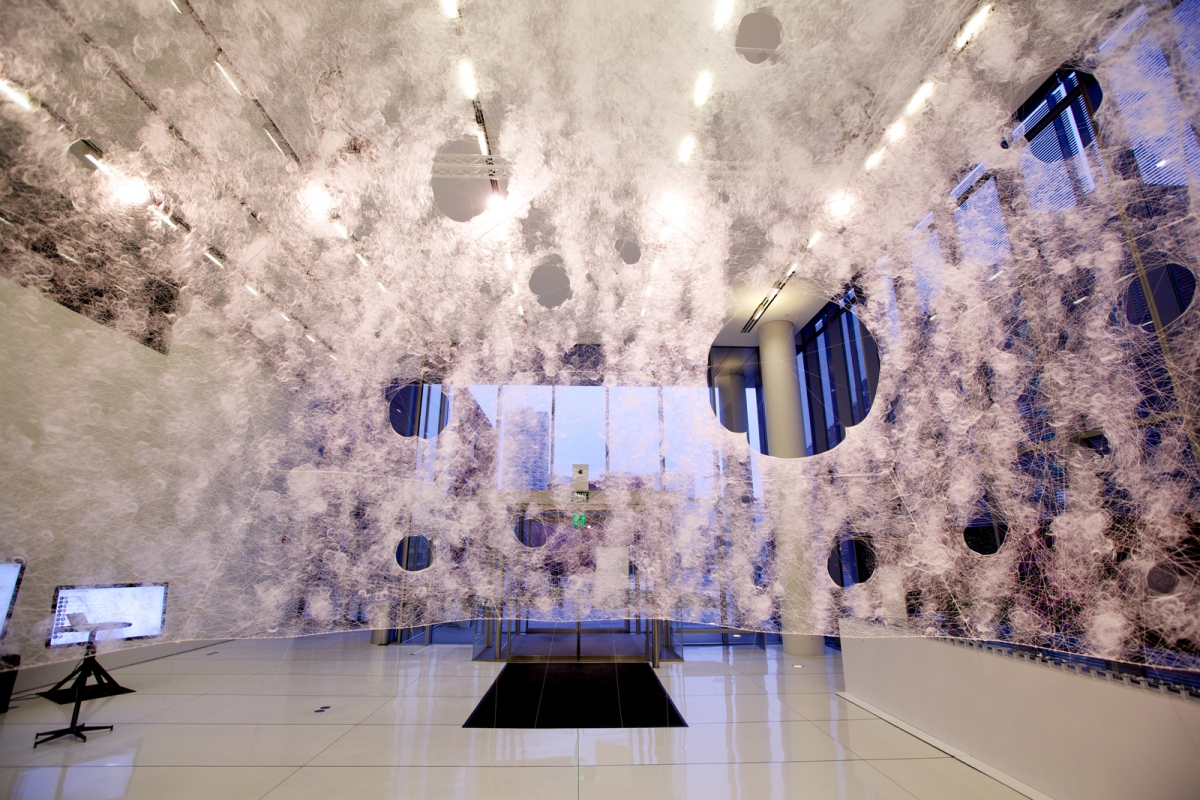Silkworms Could Provide the Key to 3D Printed Structures

MIT Media Lab’s silkworm inspired geodesic dome. Courtesy of MIT.
June 6, 2013
If you delve beyond the headlines, it doesn’t take long to find stories about research that appears odd. Why would anyone, for example, study whether a pound of lead or a pound of feathers feels heavier? Most research does have a point, even if it does seem bizarre to outsiders.
MIT’s Media Lab has recently performed one of these unusual studies by using silkworms to help determine the best method of large-scale architectural additive manufacturing (AM). The Media Lab is continually looking to nature to find ways to improve the science of building and Rapid Ready has covered some of their past research.
For the study, researchers attached magnets to the heads of silkworms and followed the patterns the tiny creatures make while spinning silk. Silkworms build a cocoon using a single thread of silk that measures more than a kilometer in length, all without the aid of CAD or other computer modeling assistance. The information gathered from watching the silkworms at work was used to plot a path for a CNC spinner, which produced 26 polygonal panels using silk thread.
Once the panels were assembled into a geodesic dome, 6,500 more silkworms were added. Researchers then studied how the silkworms went about filling the gaps in the dome. The end result looks like something meant to keep out mosquitoes, but, according to Media Lab director Neri Oxman, provided insight into how the AM of buildings could benefit from a different approach.
Oxman suggests that, rather than the standard method of 3D printing which operates from the bottom up, structures could be constructed in open space using robotic arms to weave building material. She claims that current methods of AM construction are inefficient, requiring larger and larger platforms (or larger extruders) upon which to build.
All of that might sound familiar to regular Rapid Ready readers. Softkill Design is planning to build structures using the same general idea, which may go to prove that this experiment wasn’t so odd after all.
Below you’ll find a video of the process.
Source: Creative Applications Network
Subscribe to our FREE magazine, FREE email newsletters or both!
About the Author
John NewmanJohn Newman is a Digital Engineering contributor who focuses on 3D printing. Contact him via [email protected] and read his posts on Rapid Ready Technology.
Follow DE






